Vincent van Gogh, renowned for his emotive brushstrokes and vivid colour palettes, produced a series of blossom paintings that stand in a slightly different stylistic light compared to his other works. While much of van Gogh’s oeuvre is characterized by intense, swirling compositions and bold hues, his blossom paintings, particularly the “Almond Blossom” series, exude a sense of calm and delicate beauty that sets them apart.
Almond Blossom (1890)
“Almond Blossom,” painted in 1890, is perhaps the most celebrated of van Gogh’s blossom series. This painting was created in Saint-Rémy-de-Provence, France, during one of the most poignant periods of the artist’s life. Van Gogh painted this masterpiece to celebrate the birth of his nephew, Vincent Willem, the son of his brother Theo. The piece was a symbol of new life and hope, embodying van Gogh’s deep affection for his family.
The painting features a branch of almond blossoms against a vibrant blue sky, capturing the essence of early spring. The almond tree, one of the first to bloom in spring, symbolizes awakening and renewal, a fitting tribute to a newborn. Van Gogh was inspired by Japanese ukiyo-e woodblock prints, which influenced the painting’s composition and delicate, linear style. This influence is evident in the simplicity and elegance of the almond branches, reminiscent of the works of Japanese artist Hiroshige.
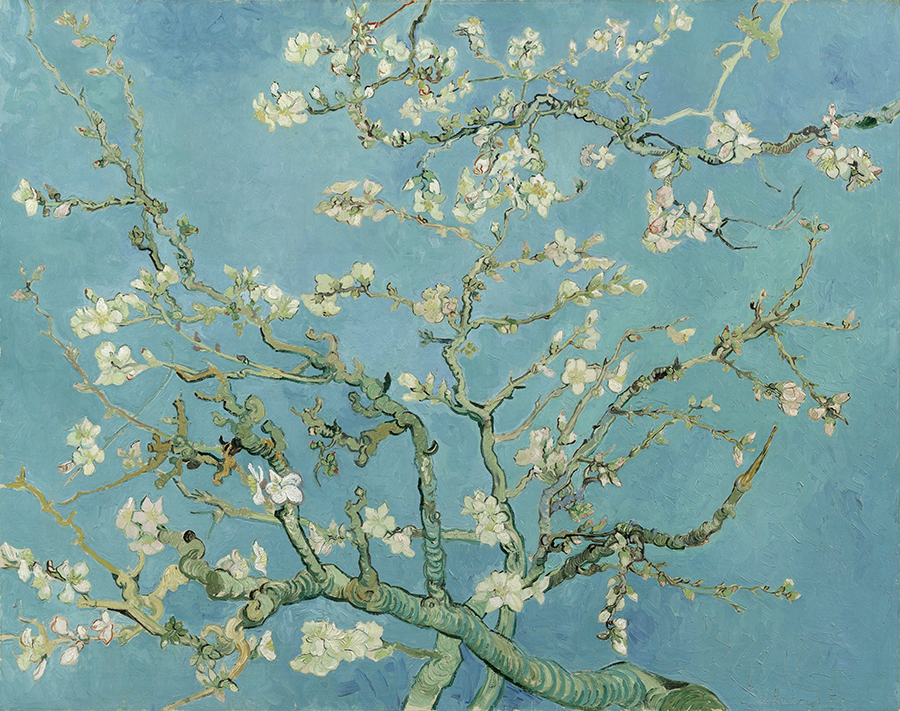
Flowering Plum Orchard (after Hiroshige) (1887)
In 1887, during his time in Paris, van Gogh created “Flowering Plum Orchard (after Hiroshige),” another notable piece in his blossom series. This work is a direct homage to the Japanese printmaker Utagawa Hiroshige, whose prints van Gogh greatly admired. The painting is a copy of Hiroshige’s original woodblock print, yet it bears van Gogh’s distinctive touch.
While the composition closely follows Hiroshige’s, van Gogh infused the painting with his characteristic bold brushwork and vibrant colours. This fusion of Eastern and Western art reflects van Gogh’s deep appreciation for Japanese aesthetics and his desire to incorporate these elements into his own work. The painting depicts a tranquil plum orchard in full bloom, with delicate white flowers contrasting against the dark, twisted branches and a bright, patterned background.
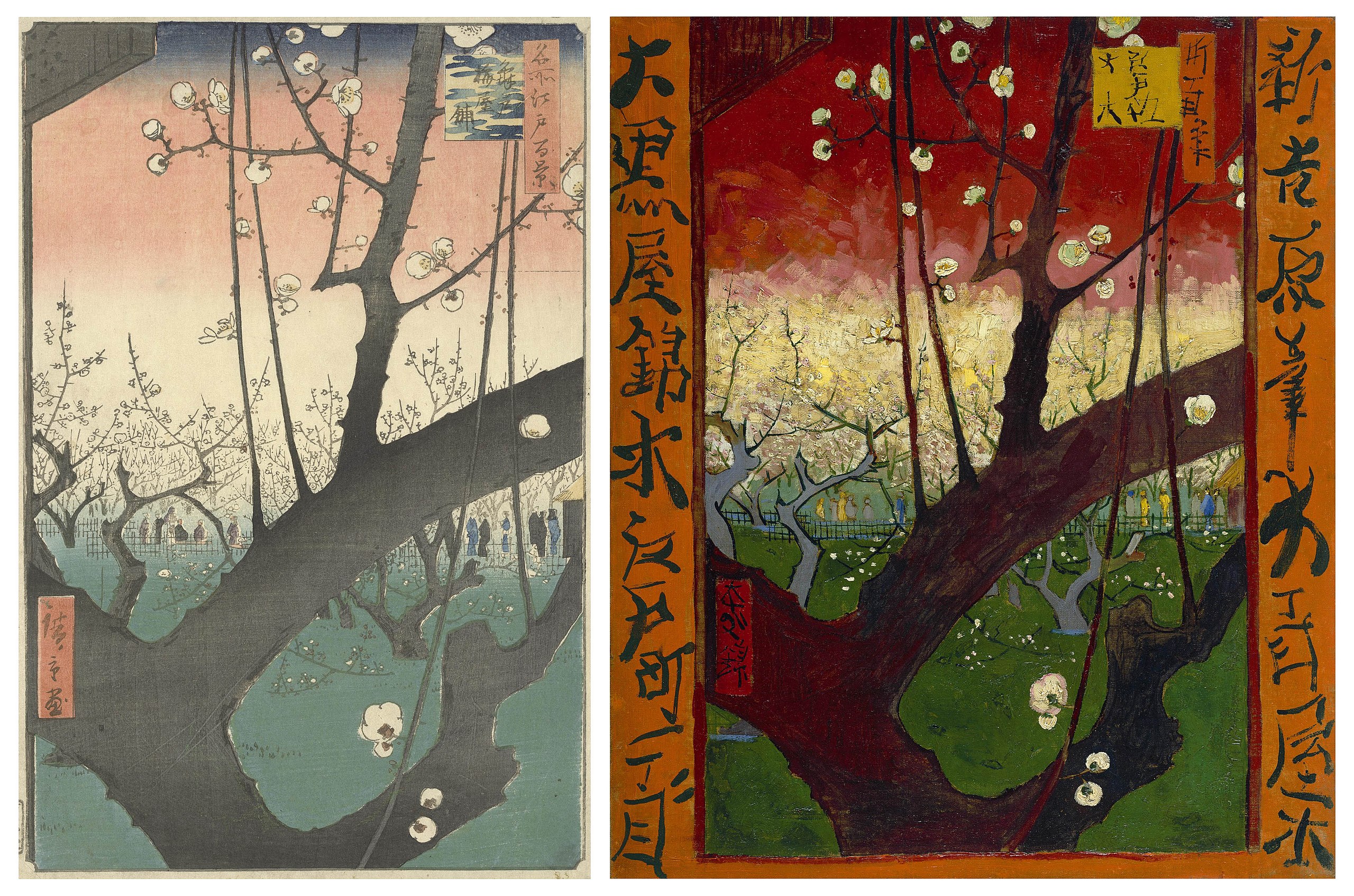
Blossoming Chestnut Branches (1890)
Another captivating work in van Gogh’s blossom series is “Blossoming Chestnut Branches,” also painted in 1890. This piece, like “Almond Blossom,” was created during his stay in Saint-Rémy-de-Provence. The painting showcases a spray of chestnut blossoms set against a striking blue background, capturing the fleeting beauty of spring.
The chestnut branches, with their intricate, clustered blooms, are rendered with meticulous detail and sensitivity. Van Gogh’s use of color in this piece is particularly noteworthy; the harmonious blend of blues and whites creates a serene, almost ethereal atmosphere. This painting, much like his other blossom works, reflects van Gogh’s profound connection to nature and his ability to find beauty in the simplest of forms.
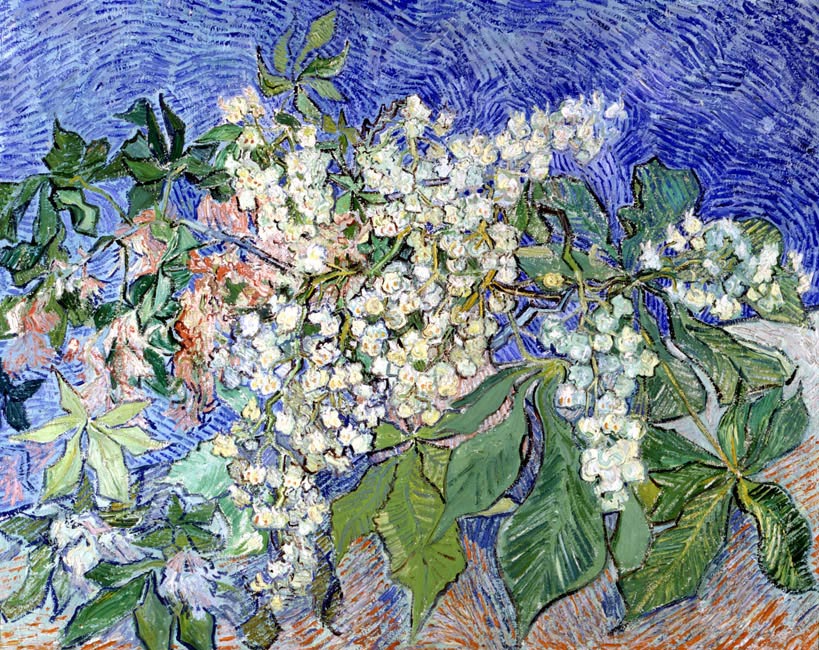
Peach Tree in Blossom (Souvenir de Mauve) (1888)
“Peach Tree in Blossom (Souvenir de Mauve),” painted in 1888, is another gem in van Gogh’s collection of blossom paintings. Created in Arles, France, this piece was dedicated to van Gogh’s mentor, Anton Mauve, who had recently passed away. The painting serves as a tribute to Mauve’s influence on van Gogh’s early artistic development.
The composition features a peach tree in full bloom, its delicate pink flowers standing out against the lush greenery of the surrounding landscape. The painting exudes a sense of tranquility and reverence, capturing the fleeting beauty of the blossoms and the cycle of life and death. Van Gogh’s use of light and colour in this work is particularly striking, with the soft, pastel hues creating a dreamlike quality.
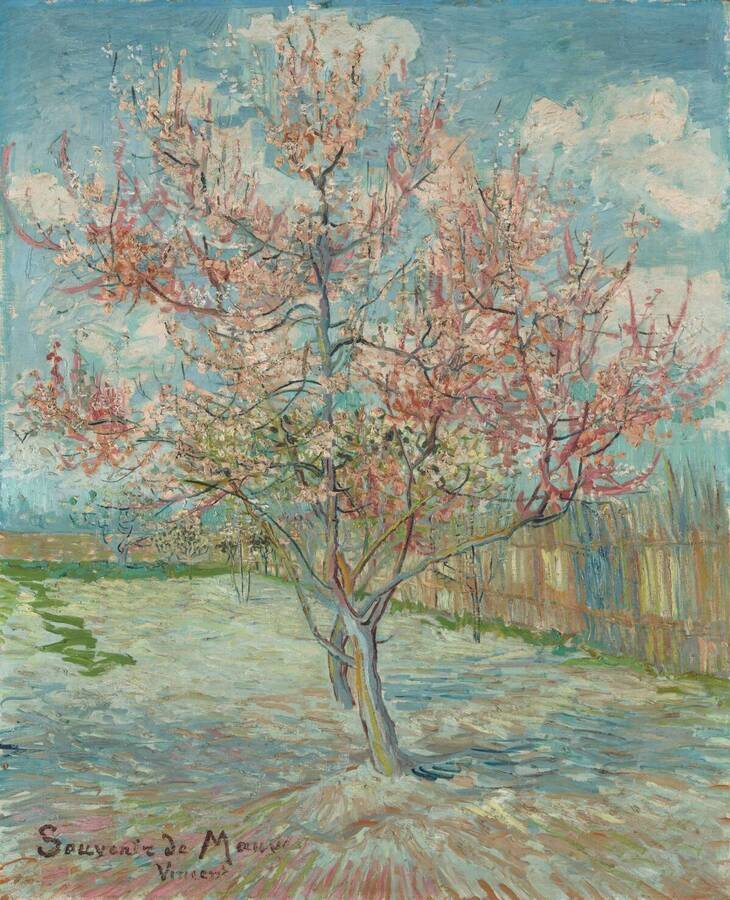
Vincent van Gogh’s blossom series showcases a different facet of his artistic genius, one that is marked by a delicate and serene beauty. These paintings, inspired by his love for nature, Japanese art, and personal experiences, reflect van Gogh’s ability to convey profound emotions through his art. The “Almond Blossom,” in particular, stands as a testament to the artist’s sensitivity and his capacity to find hope and beauty even in the most challenging of times. Through these works, van Gogh continues to inspire and captivate audiences, reminding us of the enduring power of nature and art.
If you would like to receive a roundup of all of our blog posts once a week to keep you inspired in your inbox, why not sign up to our newsletter. You can access our sign up at the top of our page. If you are a London Art College student and you would like your artwork featured here, drop us a line at any time.

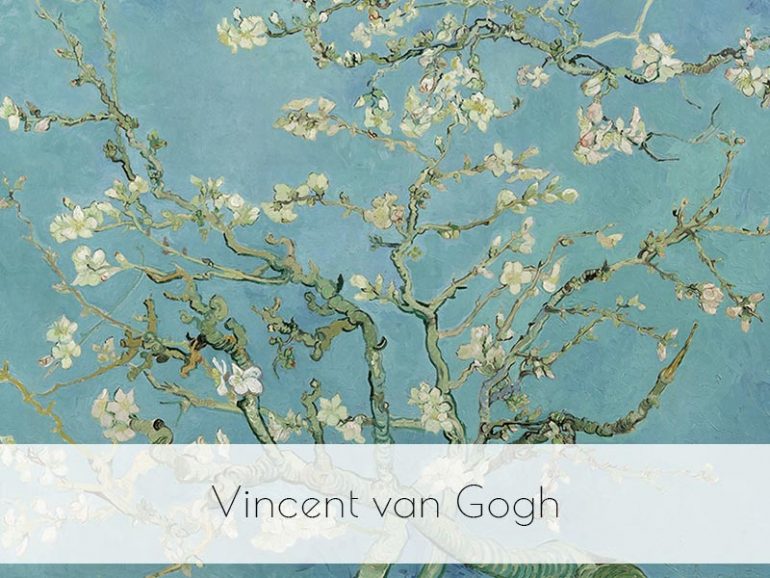
I do paint-by-number kits. My favorite are Van Gogh reproductions. I just finished his Iris garden painting for a wedding gift. His works are so calming to do.
Hi Andrea, Wow that sounds amazing! The recipients will be thrilled I’m sure.